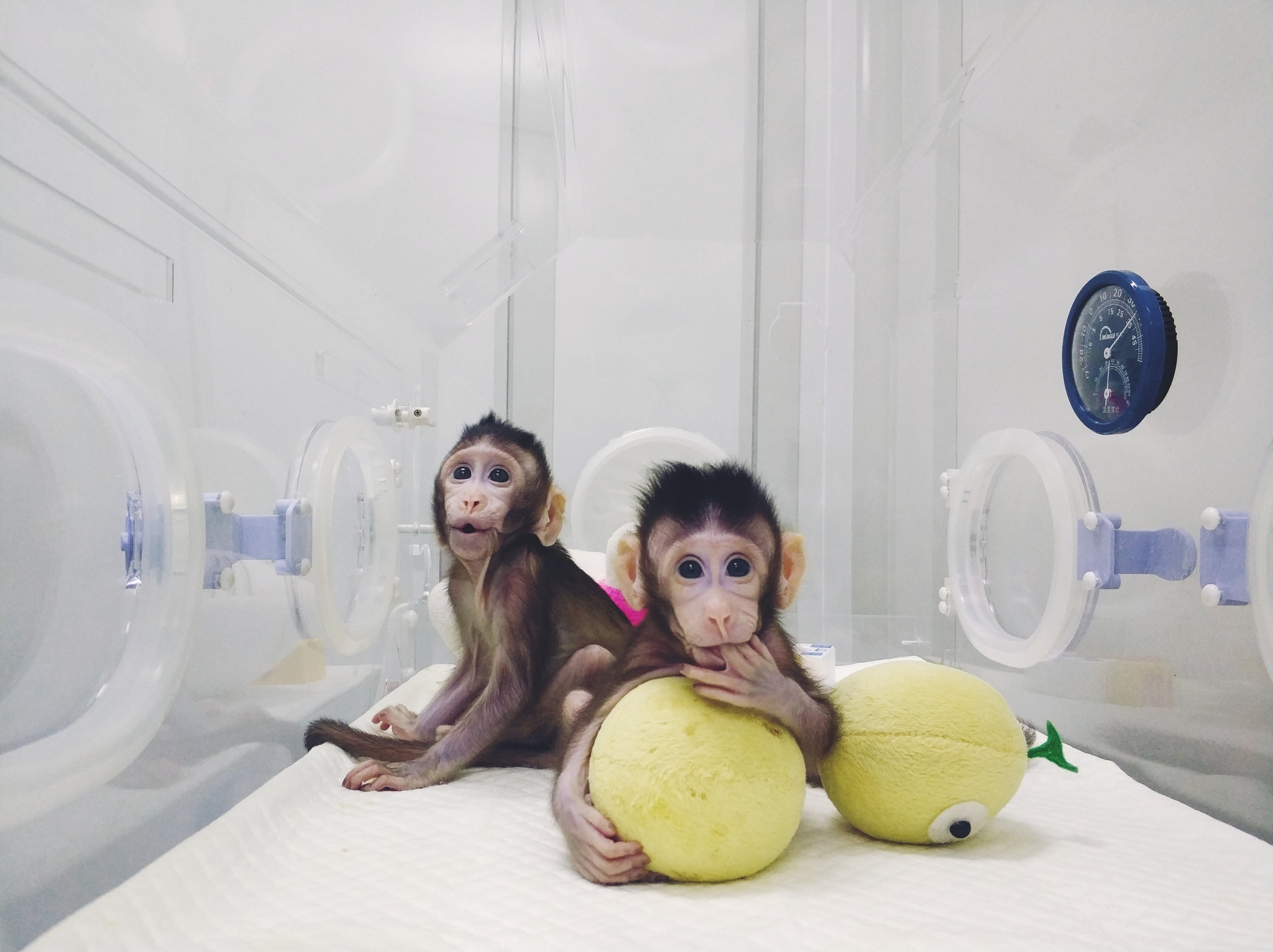

The first primate clones made by somatic cell nuclear transfer are two genetically-identical long-tailed macaques born recently at the Institute of Neuroscience of Chinese Academy of Sciences in Shanghai. Researchers named the newborns Zhong Zhong and Hua Hua—born six and eight weeks ago, respectively—after the Chinese adjective "Zhōnghuá," which means Chinese nation or people. The technical milestone, presented January 24, 2018, in the journal Cell, makes it a realistic possibility for labs to conduct research with customizable populations of genetically uniform monkeys.
Zhong Zhong and Hua Hua are not the first primate clones—the title goes to Tetra, a rhesus monkey made in 1999 by a simpler method called embryo splitting (Science, v. 287, no. 5451, pp. 317-319). This approach is how twins are made, but can only generate up to 4 offspring at a time. Zhong Zhong and Hua Hua are the product of somatic cell nuclear transfer (SCNT), the technique used to create Dolly the sheep over 20 years ago, in which researchers remove the nucleus from an egg cell and replace it with another nucleus from differentiated body cells. This reconstructed egg then develops into a clone of whatever donated the replacement nucleus.
Differentiated monkey cell nuclei, compared to other mammals such as mice or dogs, have proven resistant to SCNT. The researchers overcame this challenge primarily by introducing epigenetic modulators after the nuclear transfer that switch on or off the genes that are inhibiting the embryo development. The researchers found their success rate increased by transferring nuclei taken from fetal differentiated cells, such as fibroblasts, a cell type in the connective tissue. Zhong Zhong and Hua Hua are clones of the same macaque fetal fibroblasts. Cells from adult donor cells were also used, but those babies only lived for a few hours after birth.
The first author LIU Zhen, a postdoctoral fellow, spent three years practicing and optimizing the SCNT procedure. Including quickly and precisely removing of the nuclear materials from the egg cell and various methods of promoting the fusion of the nucleus-donor cell and enucleated egg. With additional help of epigenetic modulators that help re-activate the suppressed genes in the differentiated nucleus, he was able to achieve much higher rates of normal embryo development and pregnancy in the surrogate female monkeys.
The researchers plan to continue improving the technique, which will also benefit from future work in other labs, and monitoring Zhong Zhong and Hua Hua for their physical and intellectual development. The babies are currently bottle fed and are growing normally compared to monkeys their age. The group is also expecting more macaque clones to be born over the coming months.
The lab is following strict international guidelines for animal research set by the US National Institutes of Health, but encourage the scientific community to discuss what should or should not be acceptable practices when it comes to cloning of non-human primates.

Zhong Zhong and Hua Hua. (Image by Institute of Neuroscience)
Related Article: